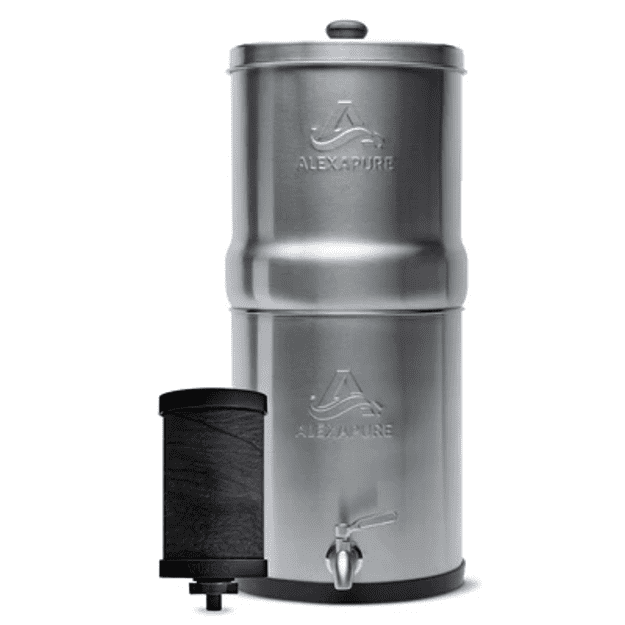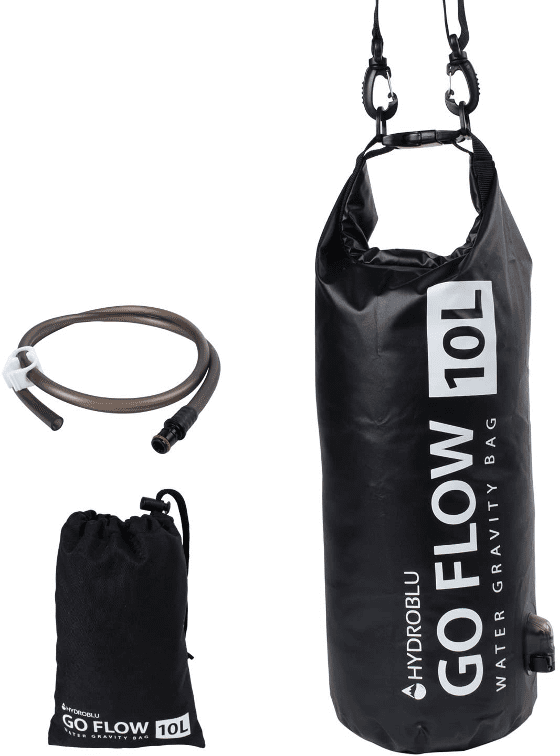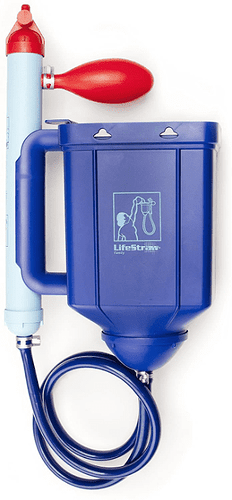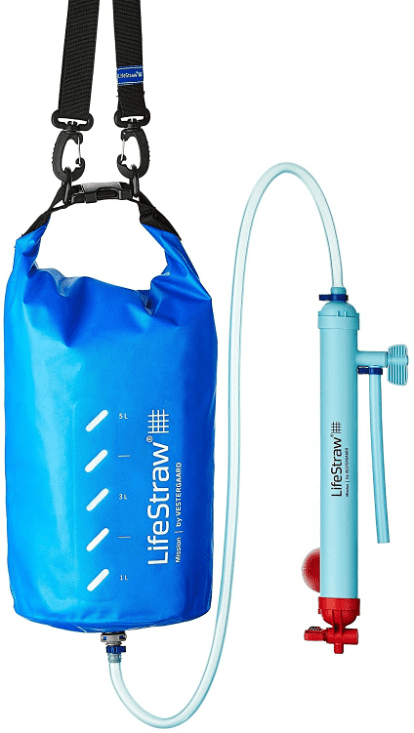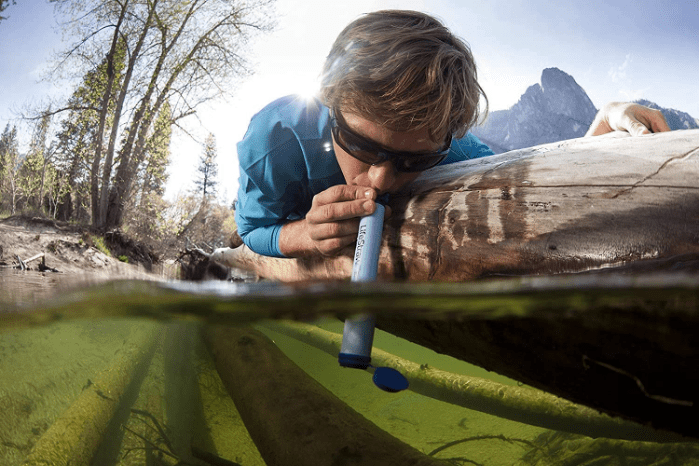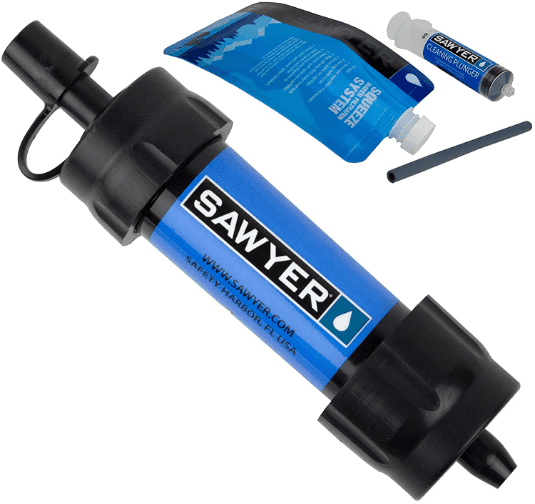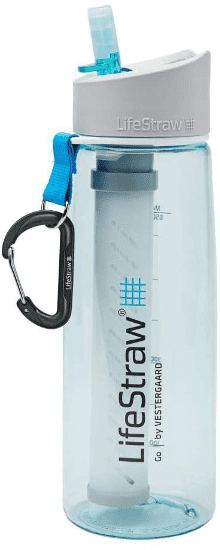Water is the first line of survival. It doesn’t matter how well prepared you are in other areas. You can live longer without food than without clean water. Dirty water kills more people than disasters. A good water filter can mean the difference between life and death.
Over the years, I have advised a lot of people on how to get started on a path to preparedness. The first thing I always tell them is to get one or more water filters. After that, take care of food, medicine, clothing and footwear needs.
The intent of this post is to offer an overview of different types of water filters. Although I have highlighted some particular brands, there are plenty of others out there, if you want to do some further research.
If you are new to the concept of emergency water filters, be aware that water filters sold at grocery stores for your tap only remove some contaminants and particulates. Typically, they do not remove bacteria, protozoa, or viruses.
Countertop gravity-fed filters
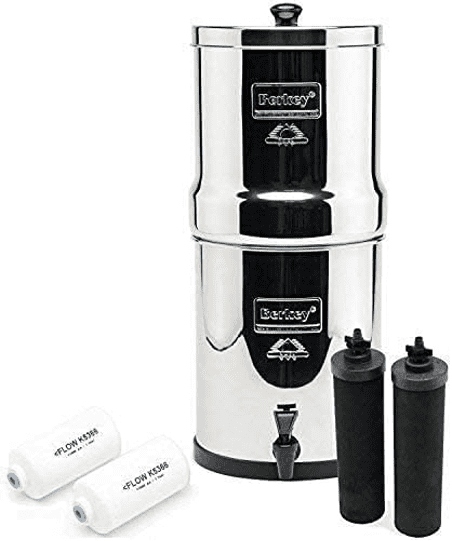
Big Berkey
Big Berkey has an excellent reputation overall. At the same time, they have limitations. For example, they are slow. A Berkey can fit up to four filters depending on size. Each filter increases the flow rate of your Berkey, but at around $80 per filter, filling your Berkey with the maximum amount of cartridges is not a cheap endeavor.
I like that Berkey filters are gravity fed, so you don’t have to do a lot of work. Again, my problem is the flow rate. Unless you have one of the larger Berkey’s, good luck getting enough flow to take care of the average sized family.
Portability is another issue. The Berkey is bulky and made to be set up and used at a base camp or in a home. It is not appropriate for major mobile use.
AlexaPure
This brand is very similar to Big Berkey, but costs considerably less. There is only one size available. A few years ago, I was sent one in exchange for an honest review. You can fit up to four filters in the unit to get a maximum flow rate. The AlexaPure works well, but it has the same issue as the Berkey. The capacity is just not enough for me to feel comfortable recommending it for anyone who needs anything beyond a little drinking water. For emergency use, it is nice to have for backup, but I would still rather have a HydroBlu and 10L bag.
Group and family-size filters
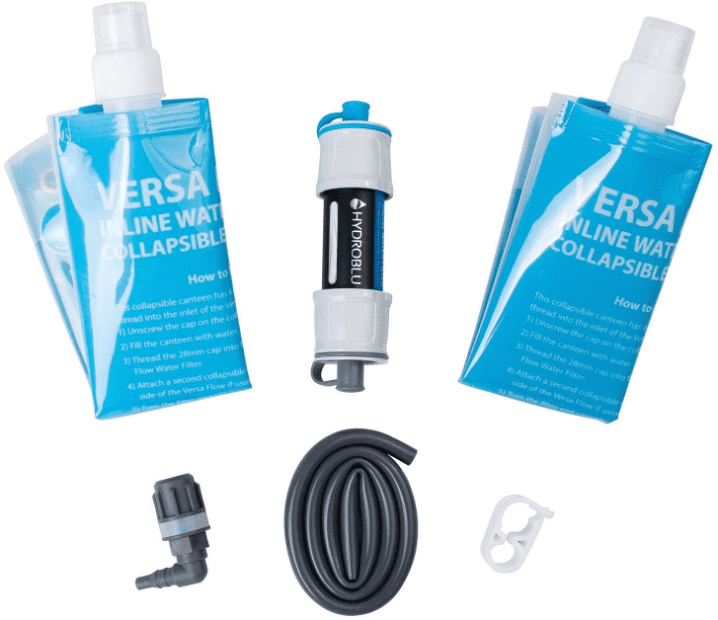
Hydro Blu Versa Flow with 10L Bag
I always recommend this filter for people on a financial or space budget. The Versa Flo System and Gravity Bag packs down to practically nothing, and at about $55, it is a bargain that will keep an entire group or family with a more than adequate supply of water. It also will not require any pumping or extra work.
I have tested this filter and drank enough water from it to know that it works well.
Another great feature of the 10L bag is that you can use a Sawyer Mini. So, if something happens to the in-line filter, you can quickly switch to a replacement and be back in business. The Versa Flo is rated to filter up to 100,000 gallons of water.
LifeStraw Family
LifeStraw makes several groups use filters. I typically recommend the LifeStraw Family because it is convenient and one of the more affordable options.
LifeStraw Mission
Similar to the Hydro Blu brand, the LifeStraw Mission hydration bag-style filter takes care of viruses as well as bacteria and parasites.
Portable filters
Every person should have a portable water filter solely for their own use. That doesn't mean that multiple people could not use it in an emergency. For example, on a camping trip or hiking excursion, I recommend each person have a Sawyer Mini and Squeeze Bag. At under $25, these inexpensive filters can be used for up to 100,000 gallons of water filtration. If everyone has their own filter, that means if someone gets separated from the group, they have increased odds of overall survival in a real emergency.The Classic LifeStraw
The LifeStraw brand is one of the most popular water filter brands out there. Over the years, the company increased its offerings far beyond the classic individual straw filter so many people bought for their bug-out bag or car emergency kit. The biggest issue I have with LifeStraw Personal Filter is that they are only rated to filter around 2,000 gallons of water before you have to throw them away. But they are inexpensive and compact, and suitable for a get-home bag or other short-term needs.
Sawyer Mini
At around $20, the Sawyer is a very affordable and versatile water filter option. Sawyer’s typically come with a squeeze bag, so you can just sip water through the Sawyer with ease. Of course, the Sawyer can also be used “in line” with a hydration bag or backpack. The Sawyer Mini is an excellent choice for those that want an affordable option to purchase for everyone in the family. I recommend them as the individual filter to supplement for a larger family during emergencies.
Katadyn Pocket
This is an amazing filter for backpacking or emergency use if you can handle the fact that you have to pump it. Unlike some of the pump-style filters I have used, you can get a quart of water in just a few minutes with this one. My dad actually bought this filter for my husband and I many years ago. Katadyn features a ceramic filter element, so you do have to exercise some caution if camping out during freezing conditions. If water is particularly dirty, it is useful to rinse off the ceramic filter at the end of the day to facilitate better filtration upon the next use.
All-In-One bottle filters
I have tried out a few all-in-one water bottle filters. They are quite convenient, especially for older people that want something easy to use. You literally just have to pour water in and then drink it. LifeStraw Go Water Filter Bottle makes an excellent version that I have personally tested. Those that are looking for an easy all-in-one solution for a get-home bag might want to consider a water filter bottle. Other trusted brands include Katadyn and GRAYL.How to get the most out of your water filter
No water filter will last forever, but many will last a long time if you care for them properly. Here are a few guidelines for the best flow rate and an increased lifespan for a filter or filter cartridge.Pre-filter water that is high in particulates. You can use cheesecloth or a somewhat clean light-colored t-shirt or similar. Another option is to collect water in a large container and then let it sit for long enough to settle any sediment.
Never allow a filter to freeze. This is particularly true of water filters that use ceramic elements. It will crack your filter, and it will be useless, especially if there is moisture inside. If you are roughing it under cold conditions, always store your ceramic filter wrapped in something warm and preferably close to your body. Of course, letting it dry out before is preferable, but it is not always practical to do this with something you need to use so often.
Let gravity do the work for you. Using a water filter bag or a hydration pack takes a lot of the work out of filtering water. If you already have something like a CamelBak, you can add a filter to the output line and have a system that can accommodate multiple people with no pumping or hassle.
Clean your filter. Some filters require cleaning and unclogging more often than others. For example, a ceramic filter can get dirty fairly fast if pumping from small pools, creeks, lakes, etc. When my husband and I use our Katadyn, we make sure to rinse the dirt and sediment off the ceramic element before laying it out to dry. We typically do this after any major excursion, so sediment and dirt don’t dry in the filter between uses. Check your filter’s manual or online guide and familiarize yourself with the procedure for cleaning it, and how often it should be done.
Levels of filtration
Some products only filter out bacteria and parasites. To protect against viruses, make sure the filter is rated to do this. Overall, a great deal of the water filters available do offer virus protection.You may be thinking that you live in an area with pretty good water. That the only thing you need to worry about is the bacteria and parasites from untreated groundwater. It may be true during times of relative stability. Still, in hard times when sanitary conditions deteriorate and people resort to using streams and rivers more, the viral load could increase a lot. It is best to be prepared with filters that can handle all types of situations. The cost is not significantly more, and it will give you some peace of mind.
Actual filter lifespan
While some filters like the Sawyer Mini claim they are good for up to 100,000 gallons of water, other filters have significantly shorter life spans. When calculating the cost of a filter, consider the price of replacement filters or if you have to throw out the entire filter and buy a new one. Remember the "filter life" is just an estimate. You can decrease the life of your filter by abusing it.Do you care where your filter is manufactured?
There are a ton of different water filter brands available. Some versions are clearly knock-offs of well-known brands. Plenty of water filter manufacturing takes place in China. If you care about where your filter is made, find this out before purchasing.Sometimes brands will change where their products are made based on costs and overall demand. Expect to pay more for filters that are not made in locations known for the low cost of labor and raw materials.
Find the best source for water during a short or long emergency.
You may already know exactly where to get water if not from your tap. If not, now is the time to make the effort. Those in urban environments may find this more challenging (keep in mind the amount of chemicals and particulates increase with people and urban settings). During especially hard times, including war, people have been known to use tarps to collect rainwater and then boil or filter it.Remember the easiest-to-reach sources of water have a good chance of becoming increasingly polluted during a long emergency. Easier-to-reach sources may also be more dangerous to use if there are other factors at play such as people seeking to innocents. War and severe civil unrest can make doing basic things very dangerous. Knowing where more obscure sources of water are is a good thing!
This is a companion discussion topic for the original entry at https://peakprosperity.com/a-quick-guide-to-water-filters/
